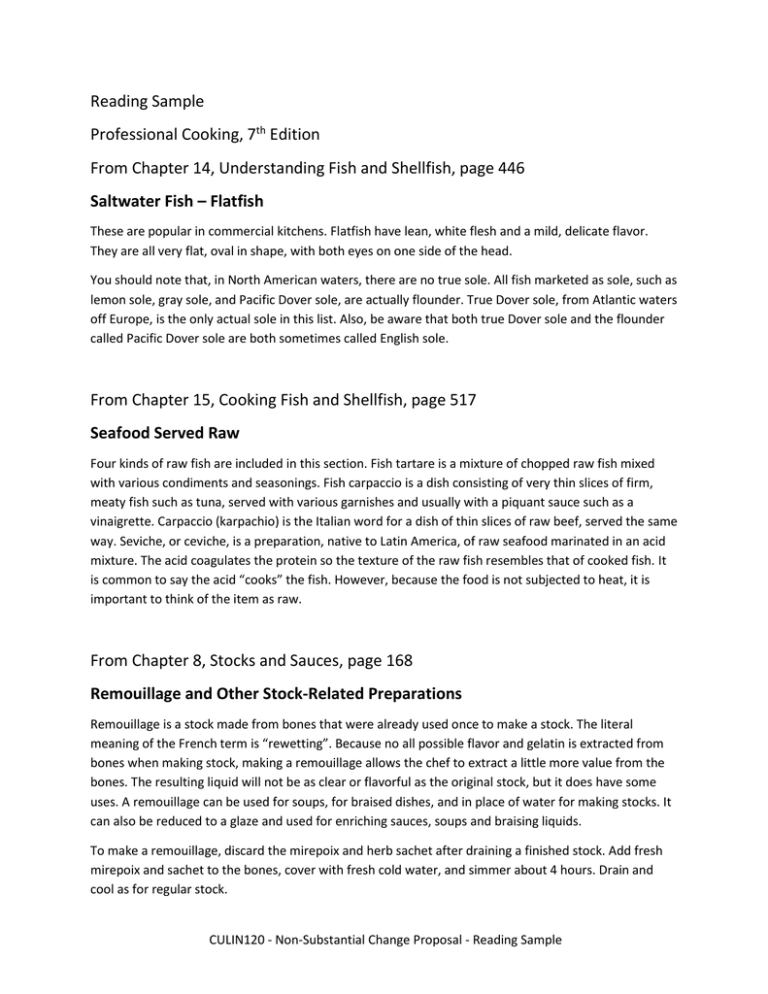CULIN 120 Reading Sample v2.docx 16KB Jan 28 2015 07:13:54 AM
advertisement

Reading Sample Professional Cooking, 7th Edition From Chapter 14, Understanding Fish and Shellfish, page 446 Saltwater Fish – Flatfish These are popular in commercial kitchens. Flatfish have lean, white flesh and a mild, delicate flavor. They are all very flat, oval in shape, with both eyes on one side of the head. You should note that, in North American waters, there are no true sole. All fish marketed as sole, such as lemon sole, gray sole, and Pacific Dover sole, are actually flounder. True Dover sole, from Atlantic waters off Europe, is the only actual sole in this list. Also, be aware that both true Dover sole and the flounder called Pacific Dover sole are both sometimes called English sole. From Chapter 15, Cooking Fish and Shellfish, page 517 Seafood Served Raw Four kinds of raw fish are included in this section. Fish tartare is a mixture of chopped raw fish mixed with various condiments and seasonings. Fish carpaccio is a dish consisting of very thin slices of firm, meaty fish such as tuna, served with various garnishes and usually with a piquant sauce such as a vinaigrette. Carpaccio (karpachio) is the Italian word for a dish of thin slices of raw beef, served the same way. Seviche, or ceviche, is a preparation, native to Latin America, of raw seafood marinated in an acid mixture. The acid coagulates the protein so the texture of the raw fish resembles that of cooked fish. It is common to say the acid “cooks” the fish. However, because the food is not subjected to heat, it is important to think of the item as raw. From Chapter 8, Stocks and Sauces, page 168 Remouillage and Other Stock-Related Preparations Remouillage is a stock made from bones that were already used once to make a stock. The literal meaning of the French term is “rewetting”. Because no all possible flavor and gelatin is extracted from bones when making stock, making a remouillage allows the chef to extract a little more value from the bones. The resulting liquid will not be as clear or flavorful as the original stock, but it does have some uses. A remouillage can be used for soups, for braised dishes, and in place of water for making stocks. It can also be reduced to a glaze and used for enriching sauces, soups and braising liquids. To make a remouillage, discard the mirepoix and herb sachet after draining a finished stock. Add fresh mirepoix and sachet to the bones, cover with fresh cold water, and simmer about 4 hours. Drain and cool as for regular stock. CULIN120 - Non-Substantial Change Proposal - Reading Sample



